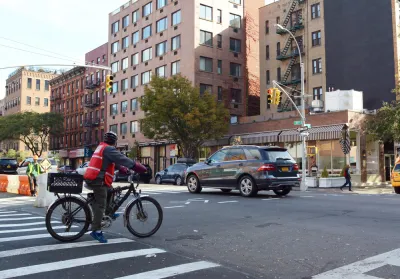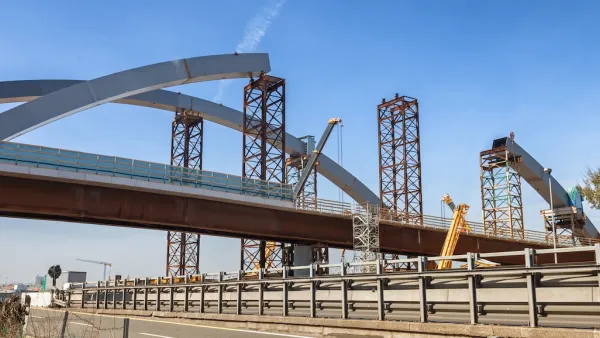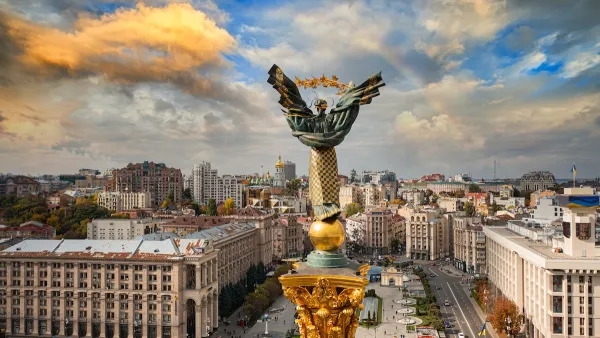A new era of civic-minded, urbanism-focused technology is here.

Technology has caused significant shifts in how people live in many cities around the world. Many individuals may use dash-mounted GPS systems to navigate to new places; others may benefit from grocery delivery services and other conveniences that allow them to get things they need without leaving their homes. Those examples are just a start to the changes coming to every aspect of city living.
Technological advancements also greatly impacting the city planners who evaluate how to make communities most suitable for the people living in them now, as well as those who will live there in the future.
Here are five examples of how technology influences how city planners are preparing for the future.
1. It's Making Planners Anticipate Driverless Cars
Companies ranging from Google to Uber are experimenting with ways to incorporate autonomous cars into society so that they are safe, efficient, and not intrusive to drivers operating conventional vehicles. However, city planners must deal with unknown factors, such as local ordinances that will eventually relate to driverless cars but aren't in place yet.
There's also the reality that even during testing phases, autonomous vehicles have failed to follow traffic rules and have less than perfect safety record. But, one way to potentially make driverless cars safer for now is to restrict them to special lanes surrounded by guardrails and equipped with sensors.
Even though it'll likely be years or even decades before people frequently see cars without drivers operating on the roads, city planners must think ahead about what the possibility means and how it could affect their current intentions for cities.
2. It Helps Planners Make More-Informed Decisions
Artificial intelligence (AI) is another technology redefining the world’s cities—and it's largely responsible for helping autonomous cars work. City planners can depend on it to figure out which services best cater to citizens as well as those needing improvement. For example, some AI-driven platforms track how many people use public transit at a certain time of day or the length of time they spend using parking garages on weekdays.
As such, AI has led to self-aware cities. In addition to interfaces that show current usage levels for city services, some predictive algorithms can estimate trends. Then, city planners can more confidently decide how to use their budgets and keep citizens content.
Researchers in Texas are working on implementing AI into traffic cameras that recognize movement from things like buses, people, and motorcycles, plus studying how moving things interact with each other. In one experiment involving counting the number of vehicles that used a street in a ten-minute span, the system was 95 percent accurate.
Then, city planners don't have to depend on old statistics or guesswork when determining how to improve traffic flow. They can analyze data in real-time or near real-time to assess how strategies are working.
3. It Makes Construction Projects Extremely Efficient
High-tech construction equipment and management platforms give city planners, as well as construction companies and other entities, data about daily loads and volumes. Data-driven technology helps keep projects on schedule by tracking things like equipment speed and movement, thereby giving projections for project completion.
Moreover, construction companies can assess the health of overall equipment and individual parts. Then, it becomes possible to prevent breakdowns that could disrupt the timing of city planning projects.
4. It Helps People Become More Engaged in Their Communities
City planners might conduct surveys or hold meetings with community residents to find out more about the things they want most, but technology offers another way to get those insights.
An app called CitySwipe was tested in Santa Monica to find out which scenarios appealed most to residents. It typically presented a couple of scenarios or posed yes/no questions about things like parking options or street furniture.
By using apps like CitySwipe and weighing in on the things that matter, residents feel more in control of where they live. Plus, city planners don't have to blindly wonder how accepting residents might be of new initiatives.
5. It Makes Cities Safer
A report from the McKinsey Global Institute that evaluated smart technologies used in 50 cities around the world found they make those places safer than the cities that don't have them.
More specifically, police can respond to incidents 40 percent faster, thereby reducing successful burglaries and assaults. In other cases, predictive analytics and solutions such as gunshot detection technology could inform law enforcement officials where to send personnel to prevent or minimize crime.
Outcomes Depend on Practical Uses and Ongoing Monitoring
If used alongside intelligent feedback from city planners, residents and others, the technologies mentioned here could have positive effects for all involved.
However, even the most advanced solutions can sometimes have downsides not noticed during the initial implementation. So, when city planners assess how to implement technology in feasible ways and evaluate it regularly for worthiness, their efforts should pay off.

Analysis: Cybertruck Fatality Rate Far Exceeds That of Ford Pinto
The Tesla Cybertruck was recalled seven times last year.

National Parks Layoffs Will Cause Communities to Lose Billions
Thousands of essential park workers were laid off this week, just before the busy spring break season.

Retro-silient?: America’s First “Eco-burb,” The Woodlands Turns 50
A master-planned community north of Houston offers lessons on green infrastructure and resilient design, but falls short of its founder’s lofty affordability and walkability goals.

Test News Post 1
This is a summary

Analysis: Cybertruck Fatality Rate Far Exceeds That of Ford Pinto
The Tesla Cybertruck was recalled seven times last year.

Test News Headline 46
Test for the image on the front page.
Urban Design for Planners 1: Software Tools
This six-course series explores essential urban design concepts using open source software and equips planners with the tools they need to participate fully in the urban design process.
Planning for Universal Design
Learn the tools for implementing Universal Design in planning regulations.
EMC Planning Group, Inc.
Planetizen
Planetizen
Mpact (formerly Rail~Volution)
Great Falls Development Authority, Inc.
HUDs Office of Policy Development and Research
NYU Wagner Graduate School of Public Service




























